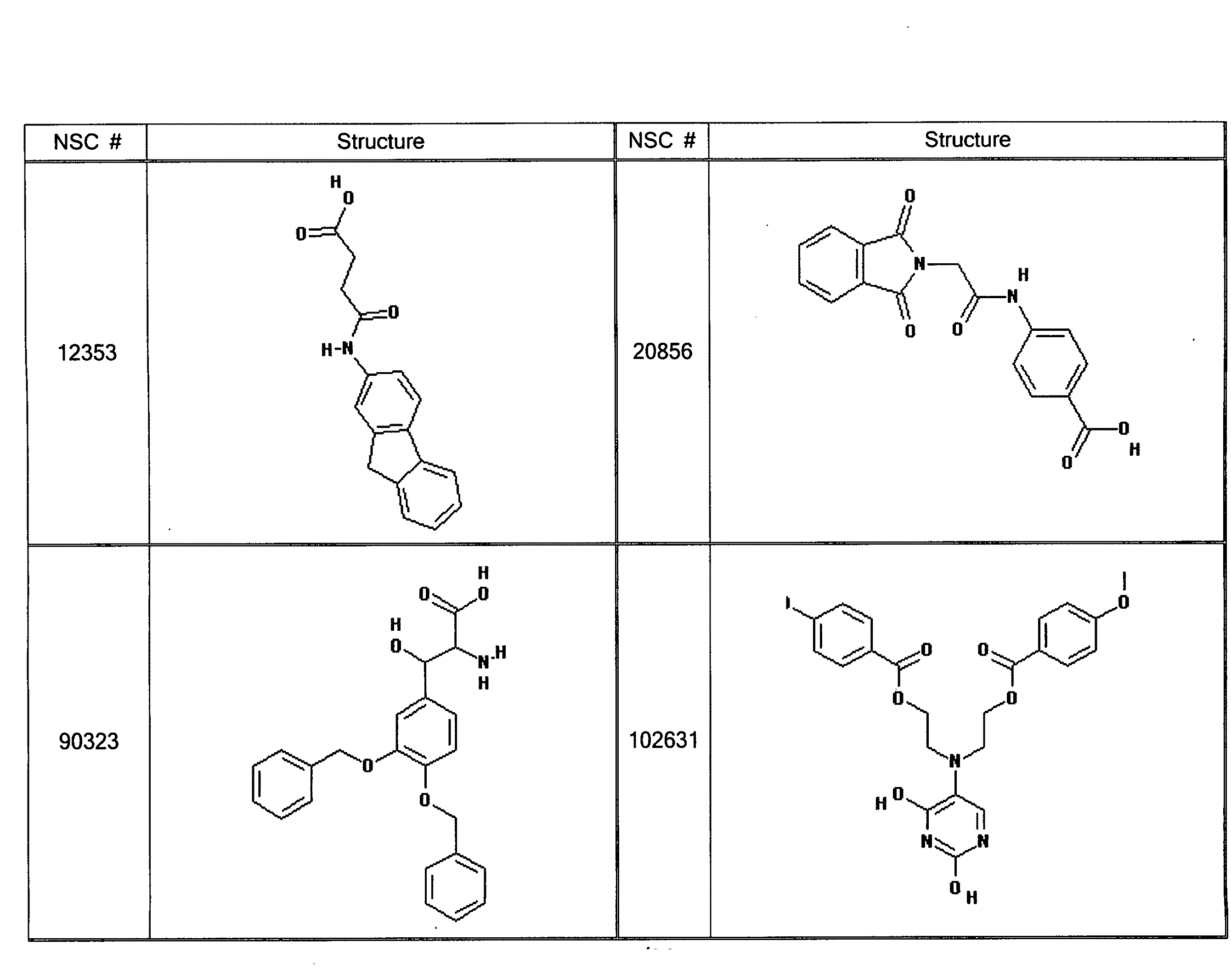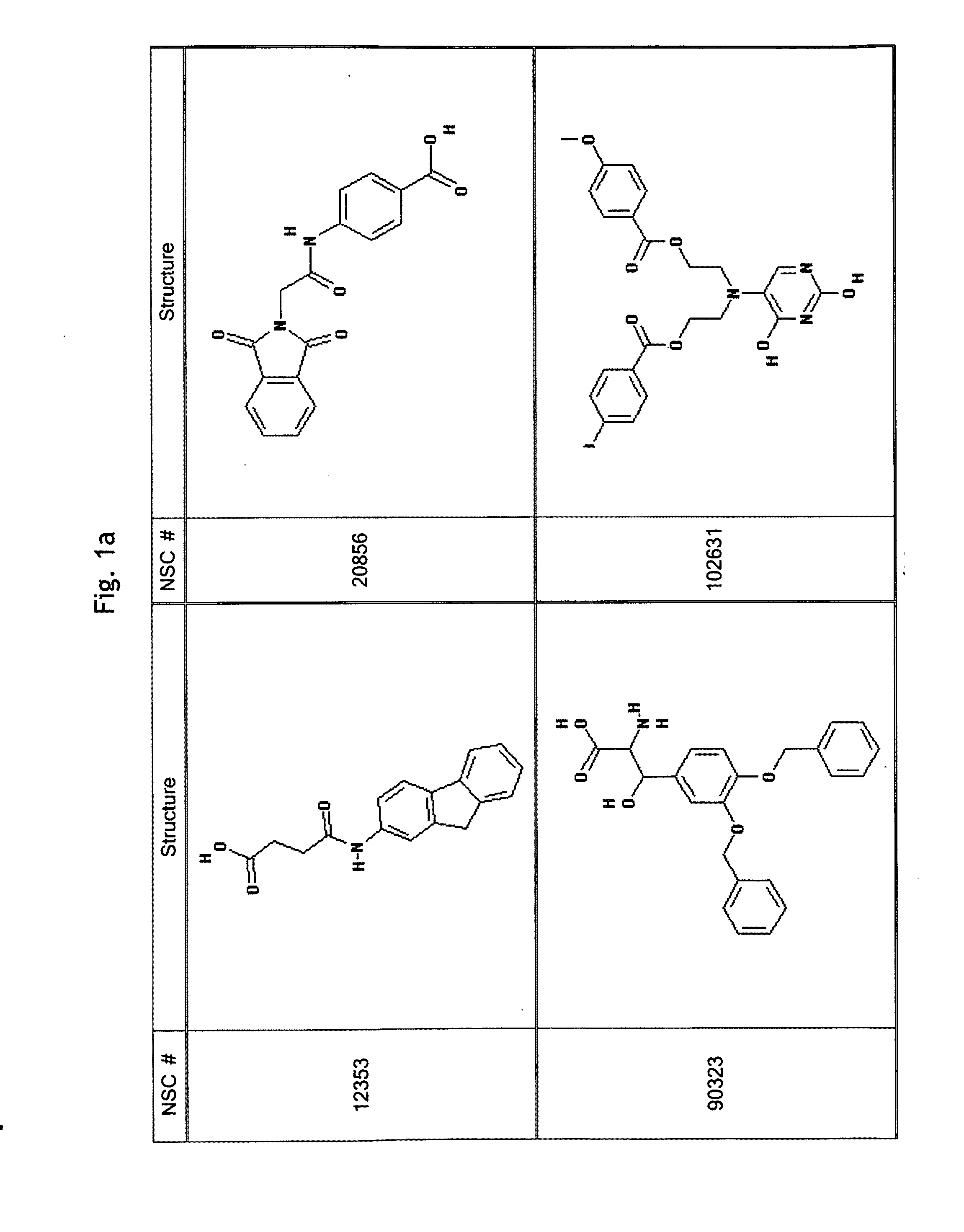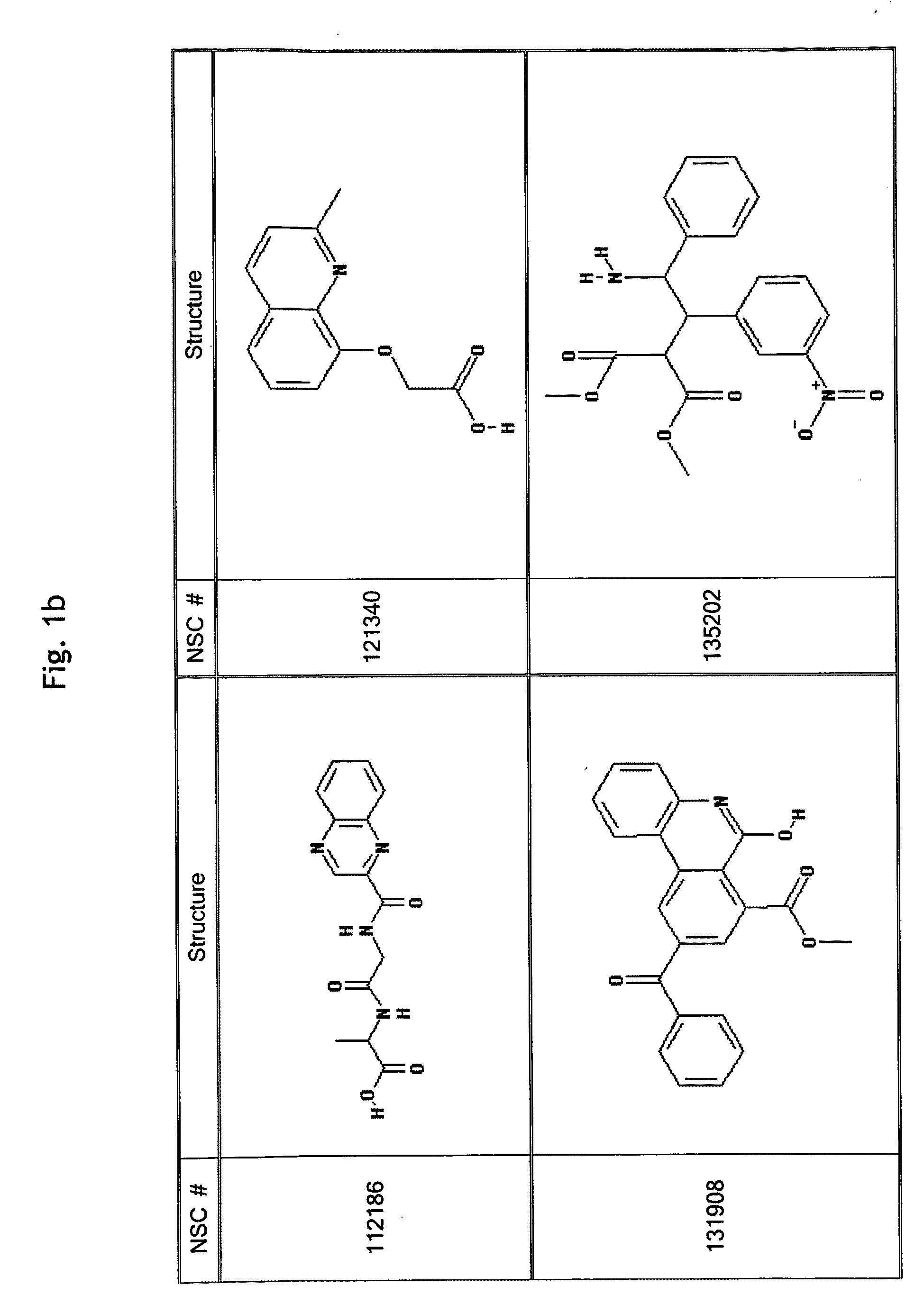GPCR Ligands Identified by Computational Modeling
a computational modeling and ligand technology, applied in the field of molecules affecting cell signaling through cellular receptors, can solve problems such as significant more difficult problems
- Summary
- Abstract
- Description
- Claims
- Application Information
AI Technical Summary
Benefits of technology
Problems solved by technology
Method used
Image
Examples
examples
Reagents
[0141]All reagents were of analytical purity and obtained from Sigma-Aldrich (St. Louis, Mo.) unless specified otherwise. S1P was purchased from Avanti Polar Lipids (Alabaster, Ala.). SEW2871 was a generous gift from Dr. Hugh Rosen (Scripps Research Institute, San Diego).
Residue Nomenclature
[0142]Amino acids in the transmembrane (TM) domains of S1P1 can be assigned index positions to facilitate comparison between GPCR with different numbers of amino acids, as described by Weinstein and coworkers (29). An index position is in the format x.xx. The first number denotes the TM domain in which the residue appears. The second number indicates the position of that residue relative to the most highly conserved residue in that TM domain which is arbitrarily assigned position 50. E3.29, then, indicates the relative position of this glutamate in TM 3 relative to the highly conserved arginine 3.50 in the E(D)RY motif (29).
Receptor Model Development: S1P1
[0143]A model of human S1P1 (Gen...
PUM
| Property | Measurement | Unit |
|---|---|---|
| Mass | aaaaa | aaaaa |
| Molar density | aaaaa | aaaaa |
| Molar density | aaaaa | aaaaa |
Abstract
Description
Claims
Application Information
 Login to View More
Login to View More - R&D
- Intellectual Property
- Life Sciences
- Materials
- Tech Scout
- Unparalleled Data Quality
- Higher Quality Content
- 60% Fewer Hallucinations
Browse by: Latest US Patents, China's latest patents, Technical Efficacy Thesaurus, Application Domain, Technology Topic, Popular Technical Reports.
© 2025 PatSnap. All rights reserved.Legal|Privacy policy|Modern Slavery Act Transparency Statement|Sitemap|About US| Contact US: help@patsnap.com



